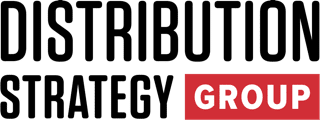In our 2021 State of Analytics in Distribution research, distributors recognized the importance of data. Ninety percent of distributor survey respondents said that analytics and BI were important in sales; and 80% said it was important to apply analytics tools to operations. More than three-quarters of respondents said that analytics and BI were important for C-level management.
The most common areas we saw adoption and widespread use of analytics in distribution were in sales performance and forecasting; operations; and by C-level management. Here are more than 40 ways distributors are using analytics:
Sales Analytics
Examples of ways distributors are using analytics to enhance sales effectiveness include:
- Customer contact analytics
- Lead scoring
- Sales forecasting
- Sales force management (sizing and geo-distribution)
- Sales process improvements (performance and compensation)
- Sales attribution between marketing and sales
The benefits of sales analytics include:
- Shorten sales cycles
- Increase sales predictability and success rates
- Optimize sales-deal sizes
- Improve profitability
- Ensure optimal sales coverage
- Strengthen performance
- Improve customer satisfaction and loyalty
Marketing Analytics
Examples of ways distributors are using marketing analytics include:
- Customer intelligence, including feedback or interaction data across channels, and demographics/psychographics
- Customer targeting based on customer history and profiles to identify similar customers
- Web analytics, including visits, navigation and conversion rate analysis
- Text and sentiment analysis
- Advertising and promotion, using A/B testing
The benefits of marketing analytics to the organization include:
- Understand your ideal customer profile and segmentation
- Understand shopping and buying behavior across channels
- Identify promotion, upsell and cross-sell opportunities
- Pricing strategy and optimization
- Market positioning and customer awareness
- Increase sales efficiency and effectiveness
- Improve planning and forecasting
Operations Analytics
Distributors are employing operations analytics for:
- Inventory planning and management (such as stock equilibrium, reorder automation, price negotiation)
- Warehouse operations (such as location optimization and merchandising across channels)
- Order fulfillment status
- Supply chain risk
- Forecasting
The benefits of using analytics to optimize operations include:
- Accurate forecasting for key customers
- Effective management across multiple locations
- Improve inventory turnover rate
- Improve order accuracy rate
- Avoid back-ordered inventory and loss of business
- Avoid dead stock, obsolete stock and related costs
- Optimize supply costs
- Optimize picking for accuracy and rate
- Reduce average delivery days
Customer Support Analytics
Distributors are using customer service analytics for:
- Customer onboarding
- Customer retention and churn analysis
- Customer lifecycle
- Purchase history
- Customer problem reporting analysis
- Customer satisfaction
- CSR agent response times and success rates
- Self-service customer experience analytics
The benefits of using analytics to improve customer service function include:
- More efficient customer onboarding and productivity
- Improve customer loyalty, satisfaction and retention (higher NPS and referrals)
- Customer lifecycle and CLV (higher order rates and AOV)
- Higher customer experience ratings
Finance Analytics
Distributors are using analytics in the finance function for:
- Financial accounting analysis, including variance analysis and accounting close
- Financial planning and forecasting, including risk analysis
- Compliance, regulatory and exceptions, including fraud and theft detection
- Procure to AP and payment analysis, such as approvals and exceptions, discounts and financing optimizations
- Order-to-cash collection analysis, including DSO and credit and risk
Benefits include:
- Rapid and accurate financial reporting
- Accurate financial forecasting
- Cash flow and working capital utilization
- Risk reduction
- Optimal financing costs
- Improve profitability
- Sustainable and predictable growth
- Improved investor relations
C-Level Management
The C suite is using analytics for a greater view of the business, including:
- High-level visualizations of company performance, including manage by exception and trends monitoring and analysis
- Discovery and exploratory analysis for new products, services and markets
- Predictive analytics for contingency and risk planning; opportunity analysis; growth and scale; and financing needs
- Buy-side analytics
- Exit planning
Benefits to the C suite include:
- Manage growth and scale
- Adapt to market dynamics
- Respond to opportunities
- Better strategy planning
- Better acquisition success
- Maximize enterprise value for stakeholders
Human Resources Analytics
Some distributors are using analytics to support human resource functions, such as:
- Hiring, including candidate assessments and screening (predictive index), job matching and time to hire
- Employee performance, such as measurement against goals and expectations; improvement programs; and termination rates vs promotions and career growth
- Cost analysis, including FTEs by department over time vs. benchmarks, and compensation vs. benchmarks
- Diversity and compliance
- Employee satisfaction, measuring absenteeism and turnover, and ENPS/referrals
The right analytics tools give you the capacity to take a step back and start managing the business in terms of where it’s going and how it’s growing, and to get unstuck from managing day-to-day.
Read how distributors are using and implementing analytics in their organizations, as well as opportunities to make analytics a clear competitive advantage in our free report, available now: 2021 State of Analytics in Distribution.
Jonathan Bein, Ph.D. is Managing Partner at Distribution Strategy Group. He’s
developed customer-facing analytics approaches for customer segmentation,
customer lifecycle management, positioning and messaging, pricing and channel strategy for distributors that want to align their sales and marketing resources with how their customers want to shop and buy. If you’re ready to drive real ROI, reach out to Jonathan today at
jbein@distributionstrategy.com.

